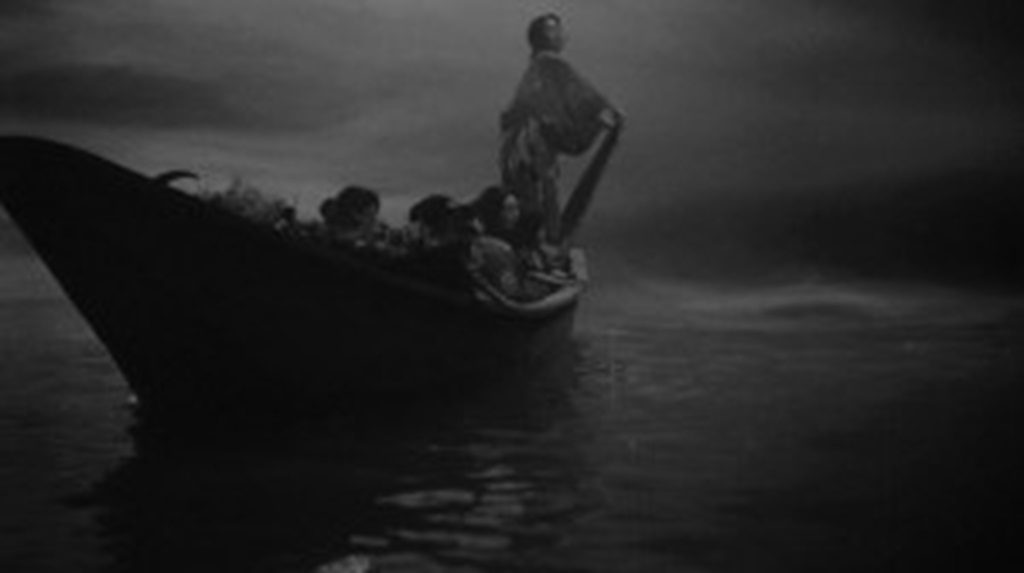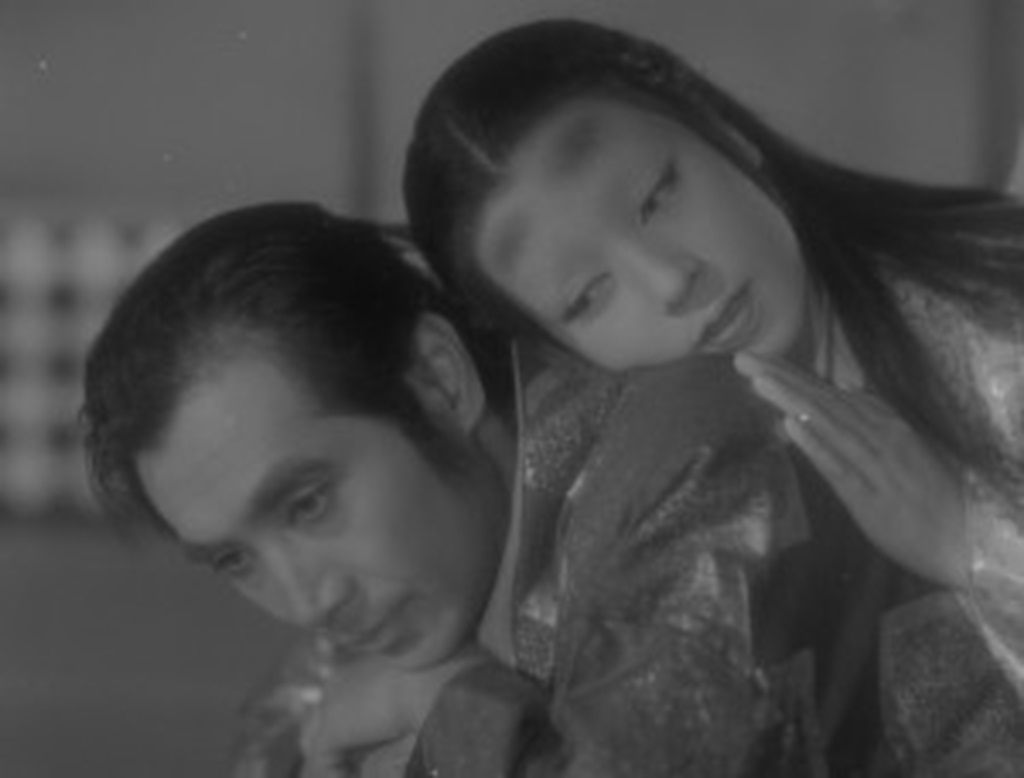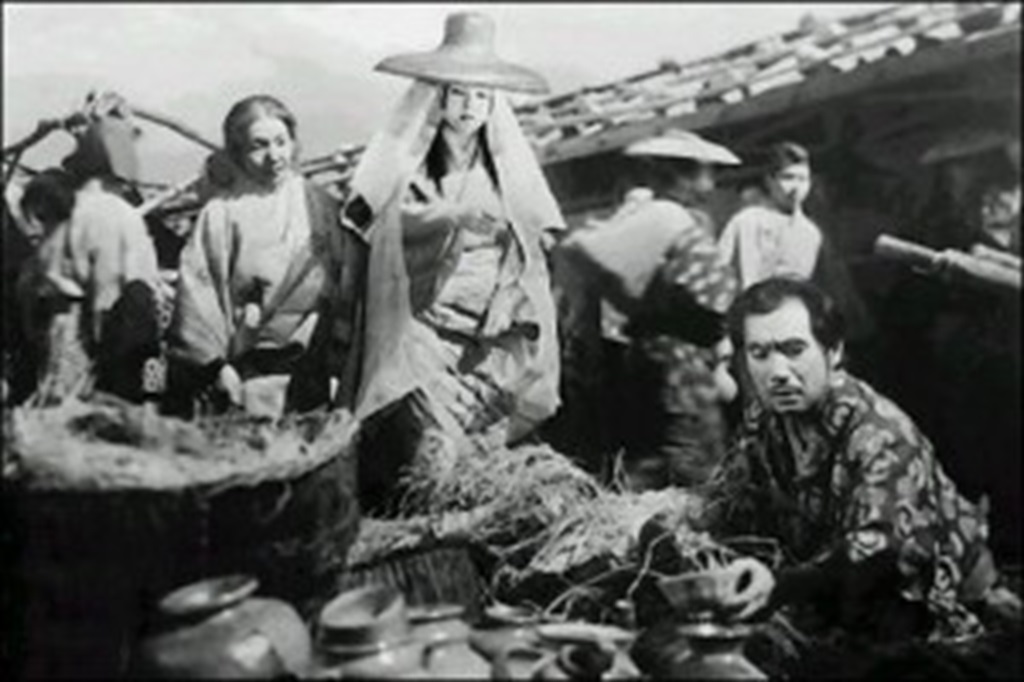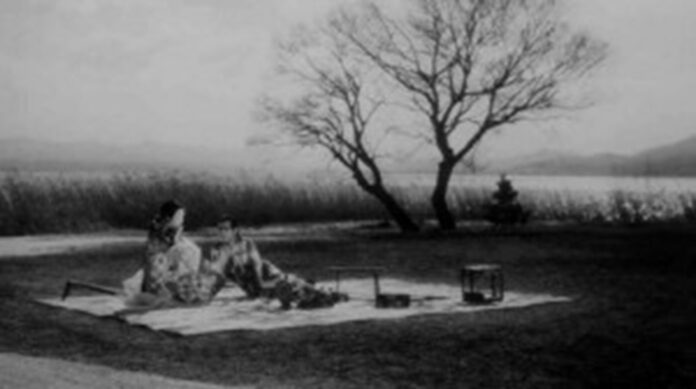Like many cinema enthusiasts, I can completely lose myself in a great film. When encountering what I consider a masterpiece, I often find myself deeply captivated by its world.
Its atmosphere can shape my perspective for hours or even days, and I sometimes unknowingly adopt the mannerisms of the actors I admire from the film.
After years of writing about cinema, I have developed the ability to pinpoint what creates this unique feeling in me. I have learned to analyze and deconstruct narrative and stylistic elements.
Ironically, “Ugetsu Monogatari,” the work that first revealed the power of cinema, remains somewhat enigmatic to me even now.
“Ugetsu Monogatari” is widely regarded as one of the great masterpieces of the renowned Japanese director Kenji Mizoguchi.
Created three years before Mizoguchi’s untimely death at 58, it was part of a series of exceptional late works by the esteemed director.
Ugetsu Monogatari
Upon its introduction in the West, “Ugetsu Monogatari” was universally acclaimed and even won the Silver Lion at the Venice Film Festival.
It is now known that “Ugetsu Monogatari” might not have been one of Mizoguchi’s most personal works. Before the war, Mizoguchi had gained fame for his unflinching portrayals of contemporary social issues.
His protagonists were often marginalized women in a male-dominated society, such as geishas and prostitutes, whose tragic experiences he analyzed with great insight and genuine compassion.
His most notable works from the 1930s, including “The Water Magician” (1933), “Osaka Elegy,” and “Sisters of Gion” (both 1936), were grounded and realistic studies set in the modern era of Japanese history, elevated by the elegant cinematography of Mizoguchi.

Also, see The ‘Star Wars’ Movie You Won’t Be Seeing Next Year
During the early 1950s, as Japanese cinema was gaining recognition in international film festivals, the interest from Western critics often focused on the perceived exoticism of Japanese films.
While socio-critical contemporary films were overlooked, period films garnered praise for their vibrant colors, intricate costumes, and ancient customs despite their relatively average content.
Masaichi Nagata, the head of Daiei production company, effectively capitalized on this Western inclination towards “foreign” exoticism over cinematic quality.
Following the success of Daiei’s production “Rashomon,” which received accolades such as the Academy Honorary Award and the Golden Lion in Venice, Nagata began producing films tailored to the Western market’s appetite for lavishly staged period dramas.
His strategy paid off, with films like “A Tale of Genji” winning awards at prestigious festivals.
“The Gate of Hell” received the Palme d’Or at the 1954 Cannes Film Festival and two Academy Awards for “Best Costume Design” and the Academy Honorary Award.
These films were more lauded for their stunning cinematography than their conventional narratives.
It is believed that “Ugetsu Monogatari” was also created with an eye on the Western festival market, evident in its meticulous recreation of a bygone era, striking scenery, elaborate costumes, and literal supernatural elements, which were trademarks of Daiei’s festival-oriented films rather than Mizoguchi’s usual style.
While ghosts were a popular theme in domestic Japanese films, especially in kaidan eiga (“Ghost films”), the supernatural elements in successful Japanese festival winners tended to have a relatively literal portrayal, unlike the psychological manifestations commonly found in ordinary Japanese films.
Examples include the seeress in “Rashomon,” the eerie female ghost in “Throne of Blood,” and the toned-down supernatural elements in “A Tale of Genji” and “Samurai.”

In “Ugetsu Monogatari,” Mizoguchi presents a world where encounters with spectral beings are rare but always feasible, creating a magical realm intertwined with the harsh realities of civil war.
Despite its nods to the Western market, the film remains quintessentially Mizoguchi, blending enchanting fairy tale elements with critical social commentary on the plight of women in medieval Japan.
The narrative unfolds as a simple yet profound parable set during the turbulent Sengoku era, following the lives of two farmers, Genjuro and Tobei, and their wives.
Genjuro, a talented potter, becomes entranced by the mysterious Lady Wakasa, who ultimately reveals herself as an evil spirit, leading Genjuro astray.
Meanwhile, Tobei pursues his dream of becoming a warrior and finds unexpected success, neglecting his faithful wife.
Despite its structural flaws, particularly related to the truncated storyline of Tobei, the film exudes powerful storytelling.
The contrast between the elegant scenes in Lady Wakasa’s mansion and the tragic fates of the women amidst the turmoil of war gives the film a poignant and cathartic quality.
Mizoguchi skillfully juxtaposes the idyllic interactions of Genjuro and Lady Wakasa with the harrowing experiences of the women, surrounded by squalor, deranged soldiers, and violence.
“Ugetsu Monogatari” manages to intertwine elements of fantasy and realism, presenting a compelling blend of mystical encounters and the grim consequences of war, all while offering a profound commentary on the human experience.

For me, though, the scene where Tobei finally earns his much-needed “glory” in the fight is heartbreaking. A samurai helps his wounded lord perform the ritual suicide known as seppuku.
Tearful at the loss, he chops off his head and walks away from his companion’s body. Tobei kills the samurai at this precise moment by attacking him from behind.
He takes the leader’s head and will get a grand prize. A bitter and most unheroic moment. One scene that captures the entire horror and injustice of war.
Ultimately, both men undergo a significant transformation, returning to their modest peasant lives. Despite their shattered ambitions, finding solace in the love of their wives brings them inner contentment.
They come to acknowledge a mysterious force that appears greater than themselves and ultimately resign themselves to their fate.
As Genjuro’s young daughter prays at her deceased mother’s grave, the evocative classic soundtrack plays, and the camera ascends above the gravesite, unveiling a view of the encompassing fields and village houses.
The ending of “Ugetsu Monogatari” left me completely captivated. I was 15 then and have revisited the movie many times since.
What exactly was it that deeply resonated with me? Was it the exquisite camera work of the master cinematographer Kazuo Miyagawa, the enduring presence of fate shaping the actions of Mizoguchi’s characters, or the nuanced performances of actors like Masayuki Mori, Eitaro Ozawa, and Machiko Kyo?
While each of these aspects profoundly impacted me, something else intrigued me – an intangible force binding together the various elements of outstanding craftsmanship, from direction to performance to composition, creating a unique masterpiece.
This distinctive cinematic force, a sense of cinematographic beauty I had never encountered, impressed me the most.
However, the precise definition of this power still eludes me. To better articulate my ambivalent sentiments towards “Ugetsu Monogatari,” I would like to rephrase a quote from Akira Kurosawa.
In his autobiography, “Something Like An Autobiography” (Gama no abura, Jiden no you na mono, 1981), Kurosawa, citing an essay by Japanese novelist Shiga Naoya, likens the nature of cinema to the form of a dog.
“Just as my dog resembles a bear or a badger, he most resembles a dog because he is a dog. Cinema shares similarities with numerous other arts.
While it possesses literary traits, it also embodies theatrical qualities, a philosophical aspect, attributes of painting and sculpture, and musical elements. Ultimately, cinema is cinema.”
Focusing solely on a single physical characteristic of a dog is insufficient to define the nature of the animal.
Similarly, cinema is just cinema despite its resemblance to other art forms. For me to question the power of “Ugetsu Monogatari” is to ponder the essence of cinema.
I can analyze its remarkable camera work, acknowledge the effectiveness of its moral tale, or describe the impeccable performances of the actors, but “Ugetsu Monogatari” transcends the sum of its parts.
“Ugetsu Monogatari” is “Ugetsu Monogatari.” Discussing “Ugetsu Monogatari” means delving into the enigmatic and indefinable concept we call “The Magic of Cinema.”
People also viewed Haskell Wexler and the Making of ‘One Flew Over the Cuckoo’s Nest’

